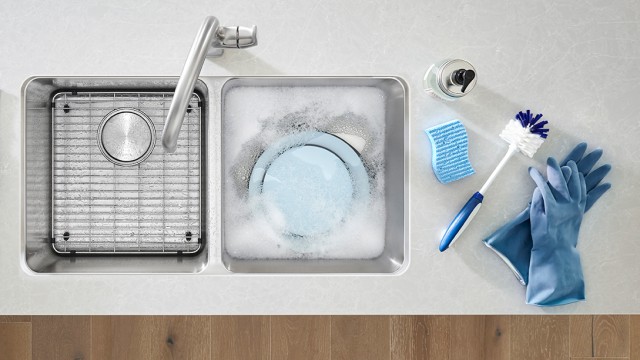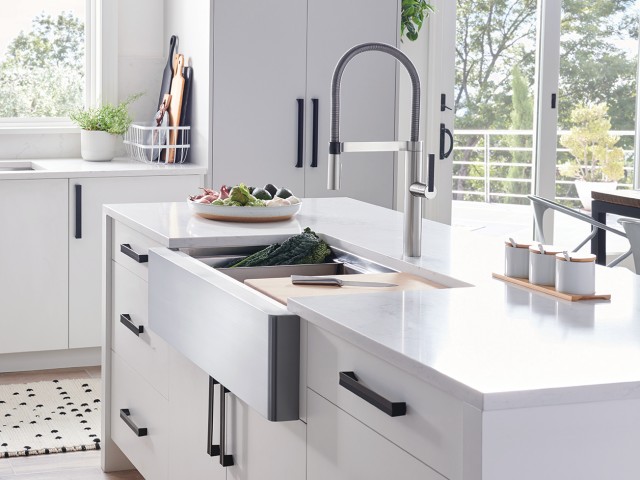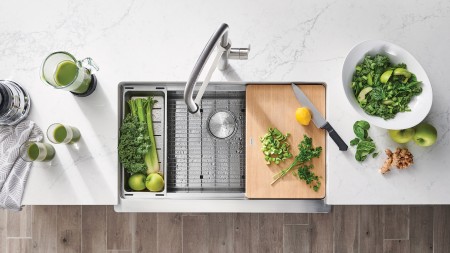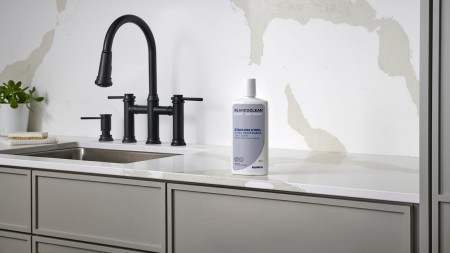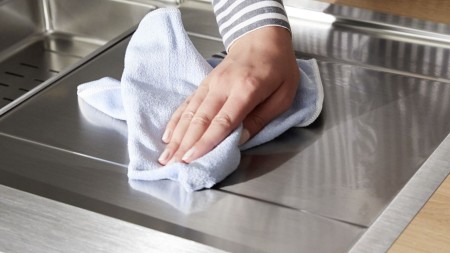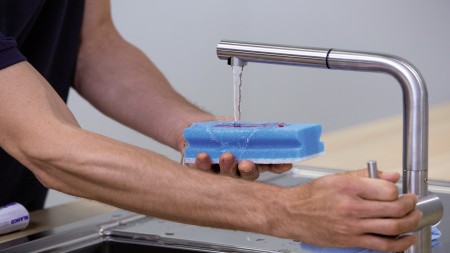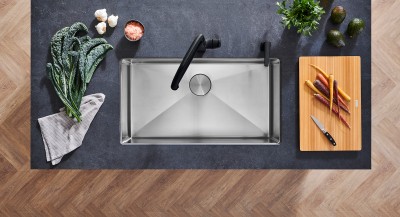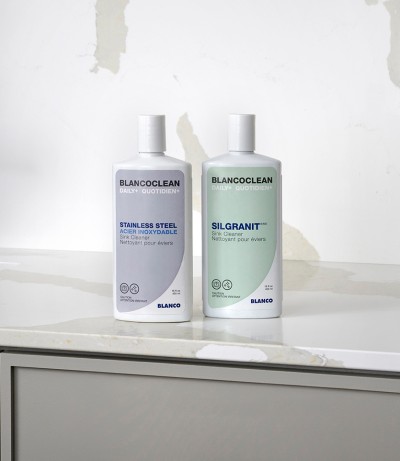How to clean your stainless steel sink
BLANCO stainless steel is a popular choice because it is durable and relatively low-maintenance. Its non-porous surface prevents dirt, bacteria and microorganisms from accumulating. It has a natural resistance to common household acids, marks and stains such as those made by coffee or certain types of fruits and vegetables. However, you’ll want to clean it properly to keep it sparkling for years to come and reduce the risk of damage. Watch our video and keep reading to learn how to clean a stainless steel sink.
